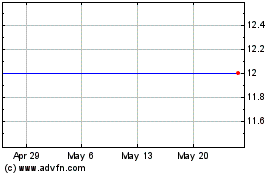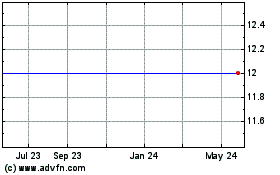Forest Laboratories, Inc (NYSE: FRX) today presented at the 49th
Interscience Conference on Antimicrobial Agents and Chemotherapy
(ICAAC) in San Francisco new data from a complete analysis of FOCUS
1 and FOCUS 2, two global multicenter Phase III studies of
ceftaroline for the treatment of community-acquired pneumonia (CAP)
in hospitalized patients. Detailed analyses from the previously
reported top-line data of the two pivotal trials demonstrated that
ceftaroline administered intravenously met the primary endpoint of
non-inferiority in patients with moderate to severe CAP requiring
hospitalization.1 Ceftaroline therapy was also generally well
tolerated, with an adverse event profile similar to
ceftriaxone.
CAP is a serious illness and common cause of mortality and
morbidity. In the U.S. an estimated 5.6 million cases of CAP occur
annually, resulting in an average of 4.5 million visits to
physicians’ offices and as many as 1.1 million
hospitalizations.2,3,4
Integrated Results
The randomized, double-blind, multicenter Phase III studies
compared clinical outcomes following treatment with ceftaroline
versus ceftriaxone in hospitalized adult patients with moderate to
severe CAP.
The combined results of FOCUS 1 and FOCUS 2 demonstrated a
clinical cure rate of 84.3% for ceftaroline and 77.7% for
ceftriaxone in the integrated clinically evaluable (CE) patient
population. The overall microbiological response rate in the
microbiologically evaluable (ME) population was 87% for ceftaroline
and 81% for ceftriaxone, and in the microbiological modified
intent-to-treat (MITT) population it was 84.8% for ceftaroline and
80.4% for ceftriaxone.
“The robust data that have emerged from FOCUS 1 and 2
demonstrate that ceftaroline is a very promising new cephalosporin
for the treatment of serious pneumonia in hospitalized patients,”
said Dirk Thye, MD, President of Cerexa, the wholly owned
anti-infectives subsidiary of Forest Laboratories, Inc. “The
continuing medical need to deal with emerging resistance to
existing therapeutic options is clear and urgent. These results,
along with our prior positive results in complicated skin and skin
structure infections (cSSSI)5, confirm that ceftaroline has unique
properties allowing it to address this medical need. We intend to
submit our New Drug Application (NDA) to the U.S. Food and Drug
Administration (FDA) for cSSSI and CAP around the end of this
calendar year.”
In addition to these two pivotal studies for CAP, data on the
microbiology of ceftaroline is being presented at ICAAC,
demonstrating its bactericidal activity in vitro and in animals
against a broad range of pathogens including those commonly
implicated in both cSSSI and CAP, as well as MRSA and multi-drug
resistant Streptococcus pneumoniae (MDRSP).
Posters
- Snydman DR, Jacobus NV, et al.
In Vitro Activity of Ceftaroline vs a Broad Spectrum of Recent
Clinical Anaerobic Isolates. Poster #903-M-060.6
- Citron DM, Goldstein EJC, et al.
In Vitro Activity of Ceftaroline Against Anaerobic Bacteria. Poster
#903-M-058.7
- Farrell DJ, Patel SN, et al.
Activity of Ceftaroline (CPT) Against Recent Streptococcus
pneumoniae (SP) Isolates From the Canadian Bacterial Surveillance
Network (CBSN). Poster #903-M-067. 8
- Jacobs MR, Bajaksouzilan S, et
al. Activity of Ceftaroline Against Emerging Serotypes of
Streptococcus pneumoniae. Poster #903-M-069. 9
- Jones RN, Sader HS, et al.
Antimicrobial Activity of Ceftaroline Tested against streptococci
from United States (USA) and European (EU) Medical Centers: Results
from the Ceftaroline Longitudinal Assessment of Spectrum and
Susceptibility (CLASS) Program. Poster #0903-M-035.10
- Vidaillac C. Newton K, et al.
Evaluation of Oxacillin, Daptomycin, and Ceftaroline Activity
Against Clinical Vancomycin Heterovariant Methicillin-Resistant
Staphylococcus aureus (MRSA). Poster #903-M-074.11
- Jacqueline C, Amador G, et al.
Activity of Ceftaroline (CPT) vs Daptomycin (DAP), and Tigecycline
(TGC) Against Methicillin-Susceptible, Methicillin-Resistant, and
Glycopeptide-Intermediate Staphylococcus aureus: An Experimental
Rabbit Endocarditis Study. Poster #903-M-042.12
- Sader HS, Mendes RE, et al.
Antimicrobial Activity of Ceftaroline Tested Against Streptococci
From United States (USA) and European (EU) Medical Centers: Results
from the Ceftaroline Longitudinal Assessment of Spectrum and
Susceptibility (CLASS) Program. Poster #0903-M-035.13
- Kosowska-Shick K, McGhee P,
Appelbaum P. Affinity of Ceftaroline and Caparator b-lactams to
Penicillin-Binding Proteins (PBPs) from Staphylococcus aureus.
Poster #903-M-041.14
About Ceftaroline and Ceftaroline / NXL104
Ceftaroline is a novel, bactericidal, injectable, broad-spectrum
cephalosporin being developed as a therapeutic agent for the
treatment of cSSSI and CAP which include gram-positive pathogens
such as methicillin-resistant Staphylococcus aureus (MRSA) and
multidrug-resistant S. pneumoniae (MDRSP), as well as common
gram-negative organisms. Ceftaroline has demonstrated antibacterial
activity in vitro against vancomycin-resistant S. aureus (VRSA) and
linezolid-resistant S. aureus. Ceftaroline is a member of the
cephalosporin class of antibiotics, the most frequently prescribed
class of antibiotics in the world. In clinical trials, ceftaroline
has been generally well tolerated with an adverse event profile
consistent with the cephalosporin class of antibiotics. Forest
obtained the worldwide rights (excluding Japan, where Takeda
Pharmaceuticals holds rights) to ceftaroline when it acquired
Cerexa, Inc, a privately held biopharmaceutical company, in 2007.
In August 2009, Forest Laboratories and AstraZeneca (NYSE:AZN)
entered into a definitive collaboration agreement to co-develop and
commercialize ceftaroline in all markets outside the U.S., Canada
and Japan.
Forest is also developing a combination product consisting of
ceftaroline and NXL104, a novel beta-lactamase inhibitor. The
combination of NXL104 with ceftaroline enhances the in vitro
antibacterial activity of ceftaroline against extended-spectrum
beta-lactamase-producing (ESBL) gram-negative bacteria that are
normally resistant to currently available broad-spectrum
cephalosporins.
About CAP Requiring Hospitalization
In 2006, pneumonia, along with influenza, was the eighth leading
cause of death in the U.S. and the number one cause of death in
those over age 65.15,16The cost of care for patients with CAP in
the U.S. has been estimated to be over $10 billion annually.17
The primary treatment for CAP is antibiotics14 and the rates of
resistance to many commonly used antibiotics is increasing.18 S.
pneumoniae accounts for 60% to 70% of all bacterial CAP cases and
data have shown that, overall, pneumococcal strains had a 28%
intermediate resistance rate and a 16% high-level resistance
rate.19 With increasing rates of pneumonia caused by MRSA and the
high rates of resistance to common antibiotics, treatment options
are becoming more limited.20
About Forest Laboratories
Forest Laboratories (NYSE: FRX) is a U.S.-based pharmaceutical
company with a long track record of building partnerships and
developing and marketing products that make a positive difference
in people’s lives. In addition to its well-established franchises
in therapeutic areas of the central nervous and cardiovascular
systems, Forest’s current pipeline includes product candidates in
all stages of development and across a wide range of therapeutic
areas. The company is headquartered in New York, NY. To learn more
about Forest Laboratories, visit www.FRX.com. Cerexa, a
wholly-owned subsidiary of Forest Laboratories, is a
biopharmaceutical company focused on developing a growing portfolio
of novel anti-infective therapies for the treatment of serious and
life-threatening infections.
Except for the historical information contained herein, this
release contains forward-looking statements within the meaning of
the Private Securities Litigation Reform Act of 1995. These
statements involve a number of risks and uncertainties, including
the difficulty of predicting FDA approvals, the acceptance and
demand for new pharmaceutical products, the impact of competitive
products and pricing, the timely development and launch of new
products, and the risk factors listed from time to time in Forest
Laboratories' Annual Report on Form 10-K, Quarterly Reports on Form
10-Q, and any subsequent SEC filings.
References
1. Eckberg P, Friedland HD, et al. FOCUS 1 and 2: Randomized,
Double-blinded, Multicenter Phase 3 Trials of the Efficacy and
Safety of Ceftaroline (CPT) vs. Ceftriaxone (CRO) in
Community-acquired pneumonia (CAP). Presentation L1-345a. Presented
at ICAAC 2009.
2. Neiderman MS, McCombs JI, Inger AN, Kumar A, Popovian R. The
cost of treating community-acquired pneumonia in the United States.
JAMA. 1996; 275: 189-193.
3. Garibaldi RA. Epidemiology of community-acquired respiratory
tract infections in adults: incidents, etiology and impact. Am J
Med. 1985:78:32S-37S.
4. Centers for Disease Control and Prevention. Premature deaths,
monthly mortality and monthly physicians contacts – United States.
MMWR Morb Mortal Wkly Rep. 1997; 46:556.
5. Corey R, Wilcox M, Talbot GH, et al. CANVAS-1: Randomized,
Double-blinded, Phase 3 Study (P903-06) of the Efficacy and Safety
of Ceftaroline vs. Vancomycin plus Aztreonam in Complicated Skin
and Skin Structure Infections (cSSSI). Presented at ICAAC / IDSA
2008.
6. Snydman DR, Jacobus NV, et al. In Vitro Activity of
Ceftaroline vs a Broad Spectrum of Recent Clinical Anaerobic
Isolates. Poster #903-M-060. Presented at ICAAC 2009.
7. Citron DM, Goldstein EJC, et al. In Vitro Activity of
Ceftaroline Against Anaerobic Bacteria. Poster #903-M-058.
Presented at ICAAC 2009.
8. Farrell DJ, Patel SN, et al. Activity of Ceftaroline (CPT)
Against Recent Streptococcus pneumoniae (SP) Isolates From the
Canadian Bacterial Surveillance Network (CBSN). Poster #903-M-067.
Presented at ICAAC 2009.
9. Jacobs MR, Bajaksouzilan S, et al. Activity of Ceftaroline
Against Emerging Serotypes of Streptococcus pneumoniae. Poster
#903-M-069. Presented at ICAAC 2009.
10. Jones RN, Sader HS, et al. Antimicrobial Activity of
Ceftaroline Tested against streptococci from United States (USA)
and European (EU) Medical Centers: Results from the Ceftaroline
Longitudinal Assessment of Spectrum and Susceptibility (CLASS)
Program. Poster #0903-M-035 Presented at ICAAC 2009.
11. Vidaillac C. Newton K, et al. Evaluation of Oxacillin,
Daptomycin, and Ceftaroline Activity Against Clinical Vancomycin
Heterovariant Methicillin-Resistant Staphylococcus aureus (MRSA).
Poster #903-M-074. Presented at ICAAC 2009.
12. Jacqueline C, Amador G, et al. Activity of Ceftaroline (CPT)
vs Daptomycin (DAP), and Tigecycline (TGC) Against
Methicillin-Susceptible, Methicillin-Resistant, and
Glycopeptide-Intermediate Staphylococcus aureus: An Experimental
Rabbit Endocarditis Study. Poster #903-M-042. Presented at ICAAC
2009.
13. Sader HS, Mendes RE, et al. Antimicrobial Activity of
Ceftaroline Tested Against Streptococci From United States (USA)
and European (EU) Medical Centers: Results from the Ceftaroline
Longitudinal Assessment of Spectrum and Susceptibility (CLASS)
Program. Poster #0903-M-035. Presented at ICAAC 2009.
14. Kosowska-Shick K, McGhee P, Appelbaum P. Affinity of
Ceftaroline and Caparator b-lactams to Penicillin-Binding Proteins
(PBPs) from Staphylococcus aureus. Poster #903-M-041 Presented at
ICAAC 2009.
15. Centers for Disease Control and Prevention. National Center
for Health Statistics. Deaths: Preliminary Data for 2005. September
2007.
16. Heron M, Hoyert D, Murphy S. National Vital Statistics
Reports. Deaths: Final Data for 2006. 2009 April; 57:14. Available
at: http://www.cdc.gov/nchs/data/nvsr/nvsr57/nvsr57_14.pdf.
Accessed May 20, 2009.
17. Lave, JR, Lin CJ, Fine MJ, et al. The cost of treating
patients with community-acquired pneumonia. Semin Respir Crit Care
Med. 1999;20(3):189-97.
18. Official Statement of the American Thoracic Society.
Guidelines for the Management of Adults with Community-acquired
Pneumonia. Am J Repir Cric Care Med. 2001;163:1730-1754.
19. Lutfiyya MN, Henley E, Chang L. Diagnosis and Treatment of
Community-Acquired Pneumonia. Am Fam Physician. 2006 Feb
1;73(3):442-50.
20. Mandell L. Wunderink A, Anzueto, J, et al. Infectious
Diseases Society of America / America Thoracic Society consensus
guidelines on the management of community-acquired pneumonia in
adults. Clin Infect Dis. 2007;44:(Suppl. 2)S27-S72.
Forest Road Acquisition (NYSE:FRX)
Historical Stock Chart
From Jun 2024 to Jul 2024

Forest Road Acquisition (NYSE:FRX)
Historical Stock Chart
From Jul 2023 to Jul 2024
